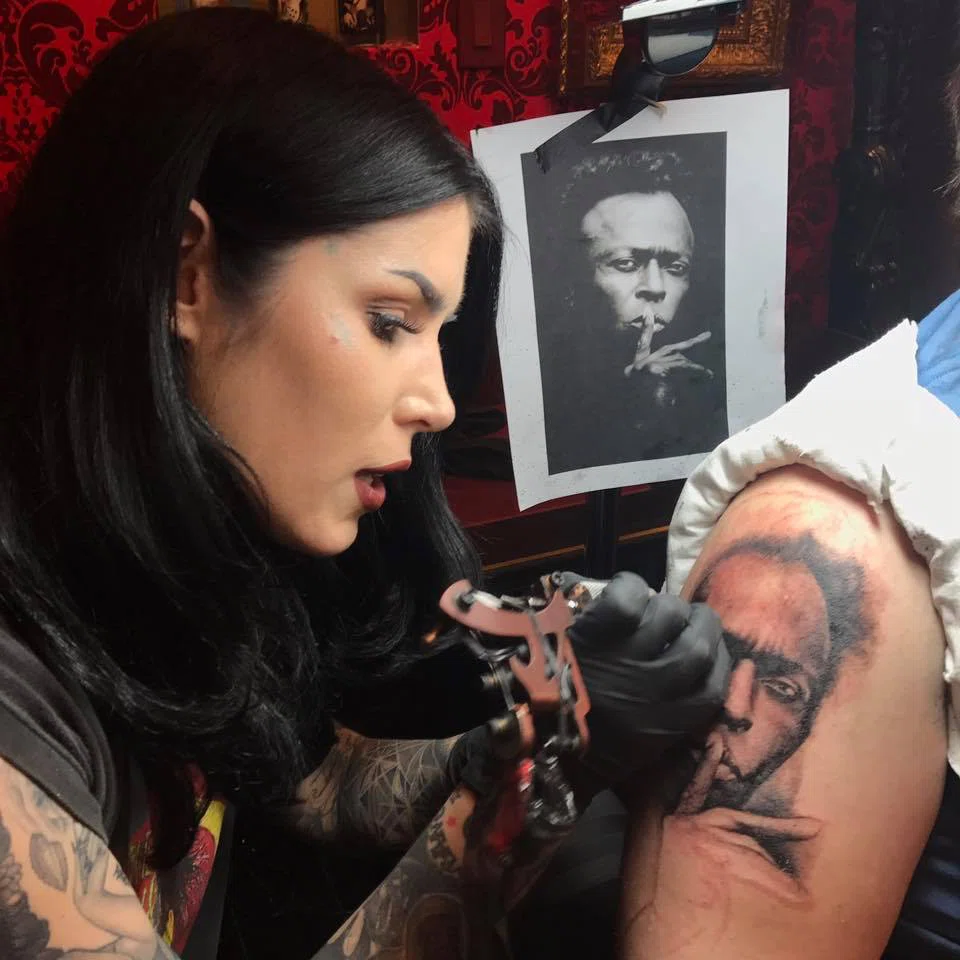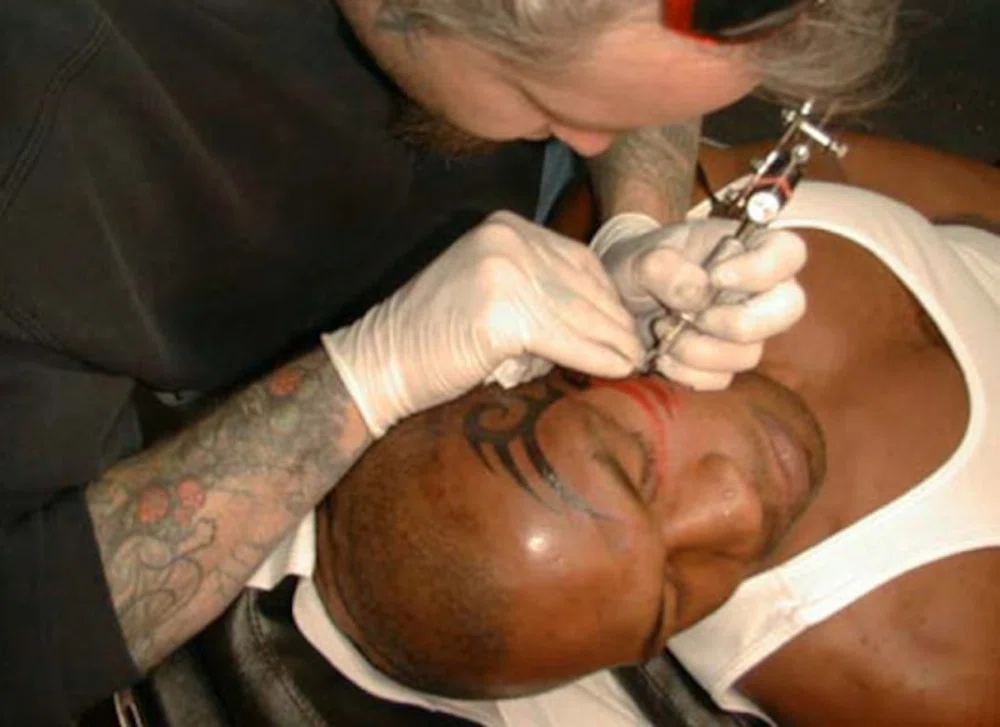Tattoos and Copyrights
When the illegal use of images also applies to tattoo designs
27 May 2024
This issue concerns our tattooing field too, and far beyond the law, there are still a few irregularities, loose endings and illegal usages.
So, the real concern is what we can do about it. Let’s analyse a few real cases to figure it out.
Realistic tattoos: Copyrights in photographs
This is an utterly complex topic, as realistic technique covers many ways and different designs, but, what happens when the design I want to have is a picture which has a legal owner?
Recently, the photographer Jeffrey B. Sedlik sued the Mexican artist Kat Von D for using a photography of Miles Davis that he had taken in 1989, for tattooing a client. According to the lawsuit, the tattooist was illegally reproducing the iconic portrait.
You can find the specific information that backs the photographer up in his website, where he explains that this piece required a significant challenge in the making of it, which signified a crucial starting point for this polemic demand.
We mean to make clear that a photograph is more than a shooting, we’re talking about a work of art that took time, effort, and creativity from the artist.

In Spain, the Intellectual Property Law (LPI) that was written in 1996 for protecting photographies (among others) considers them to be an intangible asset subject to exclusive rights and legal conditions.
All along, it would be logical to also respect tattooists’ and illustrators’ designs, as they’ve required labour, dedication and originality, and are considered to be works of art as well, but only in a different canvas.
That’s why this particular case involving Kat Von D is so striking. As, in either way, the use of an image for its illegal reproduction should be regulated and sanctioned as it is for other visual artists such as painters.
To use them, people should ask for its licence, pay what corresponds and await for the authorization.
In this case, the photographer claimed an amount of USD 150,000 for the damages caused to the original picture’s reputation.

Nonetheless, having placed it over a client’s body also brings out some doubts and is not an easy case to solve, as the discussion also implies the person who carries that illegal tattoo in his skin. So, the question actually points out to having to remove it or not.
By the time being, we can only focus on the fact that the artist illegally used other artist’s photograph.
Tattoo copyright in the big screen
Let’s see another case in where the tattooist Victor Whitmill was the victim for a misuse of the iconic tattoo he made on Mike Tyson’s face. The issue came up a few years back when the film “The Hangover” was released, where we could see a replica of this tattoo on Stue, one of the main characters.
The artist sued Warner Bros for an illegal use of his design, thus violating his author’s rights.

Although the artist had every chance of winning the trial, they ended up concluding a confidential out-of-court settlement. Anyway, we can still witness a scenario in which the piece was used for commercial purpose, and where justice could have acted in behalf of its creator.
Remember that every original design indisputably belongs to its owner, and the use of it should follow specific limits and guidelines.

Tattoos and video games, another possible copyright scenario
Let’s take a look at another example, where the affected was Solid Oak, a tattoo studio that has tattooed basketball star LeBron James, among other colleagues of the NBA team.
The dilemma appeared after 2k Games commercialized a game of the national team by replicating the players’ physiognomies, including their tattoos.
According to the studio, it wasn’t consented by their creators, who are actually the exclusive copyright owners.

But in this case, the defence declared that the players were accepting the usage of their image for reproduction as soon as they signed the contract, and of course, it included tattoos. But the presence of their tattoos wasn’t relevant and totally justified, as you can barely see them because they take part of a tiny percentage of the screen.
Anyhow, when it comes to tangible pieces, the LPI also includes the canvas which can’t be detached from the copyright ownership, thus, the player’s bodies should also be considered as a tattoo’s canvas.
However, in this case, justice concluded that the purpose given to the tattoos inside the game was different from the main goal of their creation. As they were only used as an identity representation of their carriers, and not as marketing.
Fair Use
Under the USA law, this scenario above could be catalogued as Fair Use, meaning a legitimate and reasonable use of legally protected art.
For that, some specific aspects are considered, such as purpose, nature of the original piece, and its impact on the market.
In this case, the person who makes use of his or her own designs, works or brands, shouldn't pay a licence, nor would be committing an unlawful act. Either way, the best would be to adapt to the law and analyse each case on their own.
Being well-informed and spreading the word is essential
This whole topic is too wide, and every case has a complexity of its own. As you could conclude, image theft or illegal use is more frequent than we might imagine, and every tattooist is entitled to claim for their legitimate rights as authors, as though it is with other disciplines’ artists.
We want to state that any piece of work, design, or illustration —as long as they’re original— belong to their creator, but still, there are a few controversies about all this that could remain unclear.
That’s why, raising awareness and disseminating examples of this issue could be good for coming to terms and redefining the laws in force.